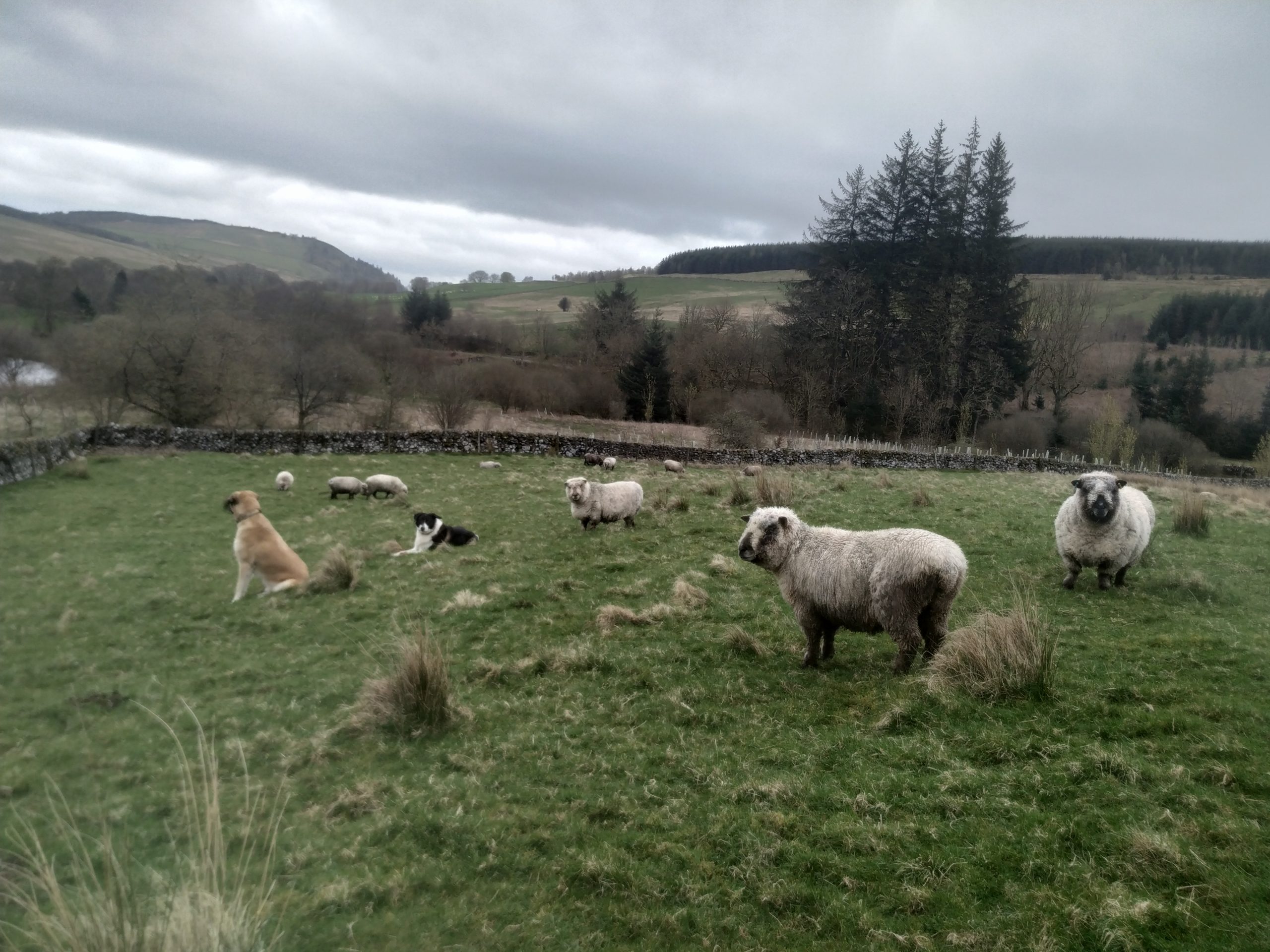
A few years ago we made the decision to stop lambing. Much as we loved having lambs skipping about each spring and doing zoomies around the paddock, we came to the realisation that it just wasn’t financially viable for us. We do miss it from time to time though, lambing with all its highs and lows, it’s a profoundly magical time of year. The miracle of witnessing life unfold, the heartbreak of having it slip through your fingers, it’s an experience you can never forget.


Since we stopped breeding, the number of sheep we have has stayed pretty much the same. The only thing that has changed is how old they are. Some of our girls have reached the ripe old age of twelve which is good going considering the average lifespan of non-commercial sheep is between ten and twelve. Our youngest are now five (which is old in commercial terms) and the rest are somewhere in between.
This winter we had three sheep on our radar, Sparkle, Scarlett and Shelby. We were keeping an eye on them because they’d lost a bit of condition. While it’s normal for sheep to come out of winter looking a bit slimmer than usual, these three were thinner than we liked, particularly Sparkle whose normal physique is erring on the tubby side of tubby.
Both Sparkle and Scarlett are missing some front teeth which would account for them losing a bit of weight. Shelby still has her front teeth but has a touch of arthritis so she finds walking tricky sometimes which means she’s not grazing as much as she ought to be.


Rather than wait for the spring grass to come through and see how they got along, I decided to fast track things a bit. Actually, I was rather concerned about Sparkle as she only has one incisor left (thankfully she still has her molars), but even with lush spring grass coming through, she wouldn’t be able to get as good a nibble at it anymore.
So I did some research and found two products that looked just the ticket; Dengie’s Pure Grass pellets, and Dengie’s Alfa-Beet pellets.
Both the alfa-beet and the grass come in concentrated (pellet) form which you have to soak before use. The advantage which comes with the soaking means that sheep with wobbly teeth should find it easier to eat.

I couldn’t wait to get started. Once I’d whizzed into town to buy what I needed, I hefted the sacks into the kitchen, got three buckets, some scales and a handful of carrots. I carefully measured out 20g of the grass pellets and 20g of the alpha-beet into each bucket. I deliberately went with a very small amount knowing sheep have delicate digestive systems. My plan was to start small and build it up. I then added 10g of ewe-nuts into the mix and a handful of grated carrot. Lastly, I added 200g water. Happy with my concoctions I left the buckets to soak and got on with some overdue housework. Three hours later, I grabbed my coat, the dogs and the buckets and set off in search of the sheep.
On locating the woolly gang, I called the three ladies into a pen and set my buckets down in front of them. I couldn’t wait to enjoy that moment – the sound of sheep enthusiastically scoffing. Sadly the moment never came, they sniffed the buckets with great suspicion, kicked them over for good measure and then looked at me with beseeching ‘feed me’ faces.
I tried hand feeding them but they weren’t having it. Hmm I thought, what to do?

I trudged back to the house and had a cup of tea. I pondered things for a while and decided it would probably be best to contact Dengie’s for advice. I sent them an email explaining my predicament and to my delight a reply came back the very next day. They suggested making the mixture a teeny bit dryer, more ‘wet-crumbly’ than ‘wet-sloppy’. They also suggested adding ewe-nuts which I’d already done, but this time I added a few more. I experimented a bit and came up with what looked to be a good consistency. 20g of alfa-beet, 20g of grass pellets, 20g ewe nuts and 160g water. Three hours later, off I went again with my buckets. This time to my delight, they stuck their heads straight in and scoffed for all they were worth!

This is our first experience with caring for elderly sheep so we’ll be learning as we go along. Fingers crossed with their nutrient-packed supplements all three will blossom and put on weight over the coming weeks. For Sparkle who has only one front teeth left, the pellets will be a lifelong addition to her diet as she will struggle to get adequate grass.





